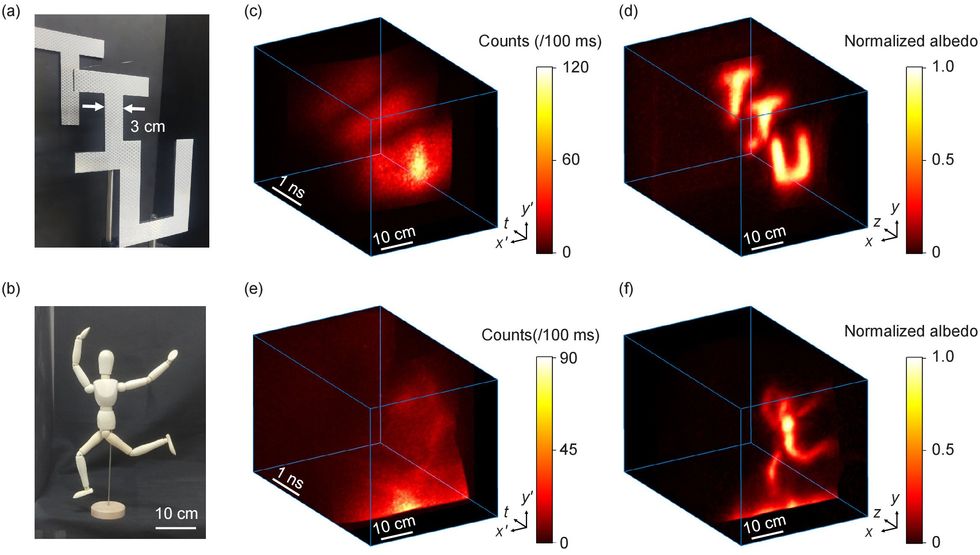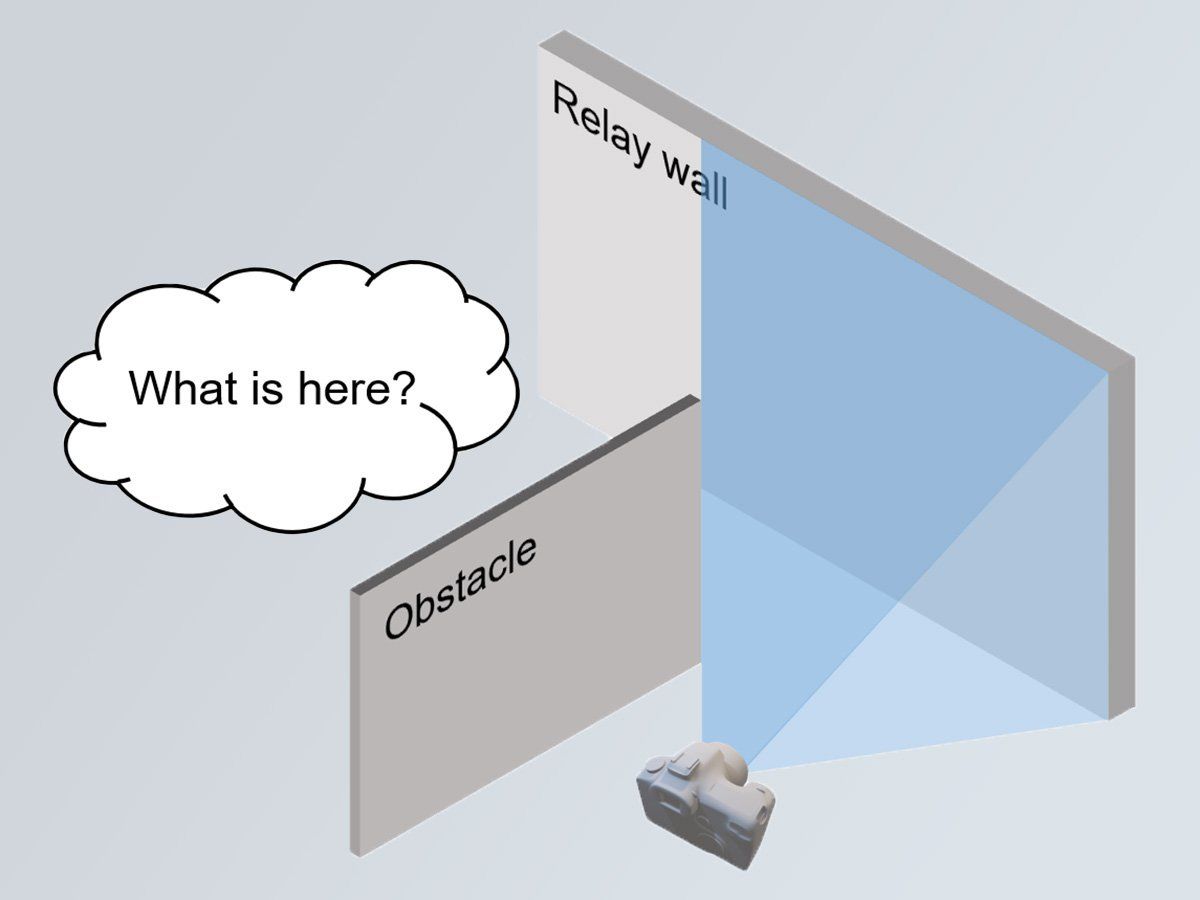Just because an object is around a corner doesn’t mean it has to be hidden. Non-line-of-sight imaging can peek around corners and spot those objects, but it has so far been limited to a narrow band of frequencies. Now, a new sensor can help extend this technique from working with visible light to infrared. This advance could help make autonomous vehicles safer, among other potential applications.
Non-line-of-sight imaging relies on the faint signals of light beams that have reflected off surfaces in order to reconstruct images. The ability to see around corners may prove useful for machine vision—for instance, helping autonomous vehicles foresee hidden dangers to better predict how to respond to them, says Xiaolong Hu, the senior author of the study and a professor at Tianjin University in Tianjin, China. It may also improve endoscopes that help doctors peer inside the body.
The light that non-line-of-sight imaging depends on is typically very dim, and until now, the detectors that were efficient and sensitive enough for non-line-of-sight imaging could only detect either visible or near-infrared light. Moving to longer wavelengths might have several advantages, such as dealing with less interference from sunshine, and the possibility of using lasers that are safe around eyes, Hu says.
Now Hu and his colleagues have for the first time performed non-line-of-sight imaging using 1,560- and 1,997-nanometer infrared wavelengths. “This extension in spectrum paves the way for more practical applications,” Hu says.

In the new study, the researchers experimented with superconducting nanowire single-photon detectors. In each device, a 40-nanometer-wide niobium titanium nitride wire was cooled to about 2 kelvins (about –271 °C), rendering the wire superconductive. A single photon could disrupt this fragile state, generating electrical pulses that enabled the efficient detection of individual photons.
The scientists contorted the nanowire in each device into a fractal pattern that took on similar shapes at various magnifications. This let the sensor detect photons of all polarizations, boosting its efficiency.
The new detector was up to nearly three times as efficient as other single-photon detectors at sensing near- and mid-infrared light. This let the researchers perform non-line-of-sight imaging, achieving a spatial resolution of roughly 1.3 to 1.5 centimeters.
In addition to an algorithm that reconstructed non-line-of-sight images based off multiple scattered light rays, the scientists developed a new algorithm that helped remove noise from their data. When each pixel during the scanning process was given 5 milliseconds to collect photons, the new de-noising algorithm reduced the root mean square error—a measure of its deviation from a perfect image—of reconstructed images by about eightfold.
The researchers now plan to arrange multiple sensors into larger arrays to boost efficiency, reduce scanning time, and extend the distance over which imaging can take place, Hu says. They would also like to test their device in daylight conditions, he adds.
The scientists detailed their findings 30 November in the journal Optics Express.
This article appears in the April 2024 print issue as “Infrared Tech Sees Around Corners.”
Charles Q. Choi is a science reporter who contributes regularly to IEEE Spectrum. He has written for Scientific American, The New York Times, Wired, and Science, among others.



